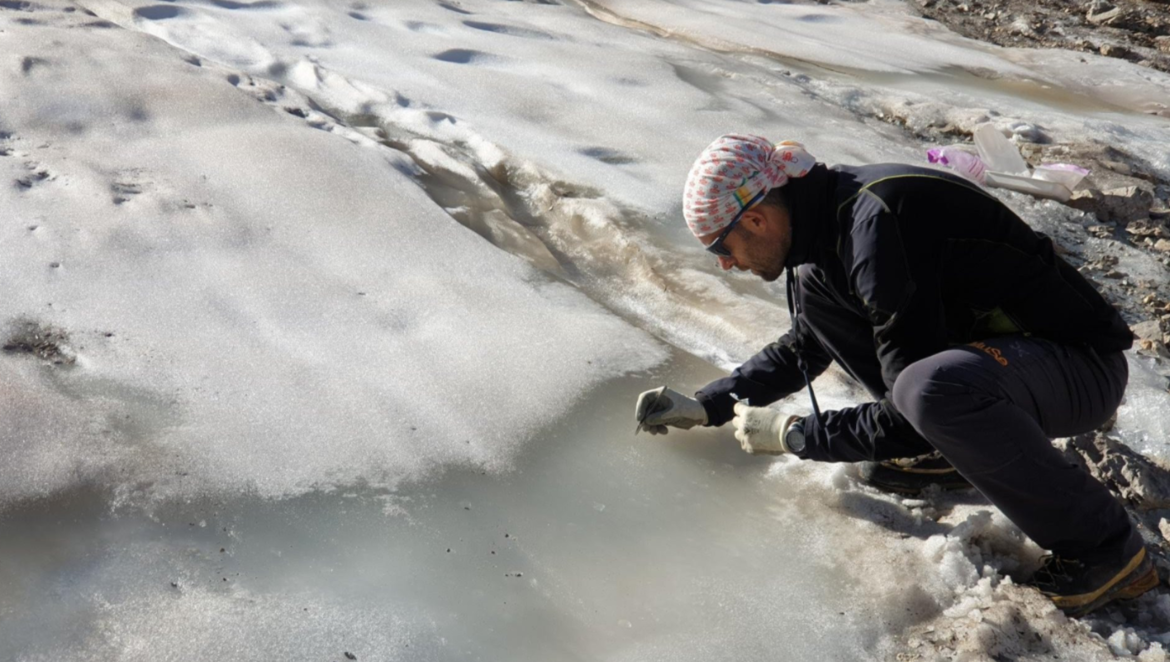Permanent glaciers: the crisis of a habitat and its biodiversity that we can no longer ignore
The appeal of eleven Italian scientists

The appeal by eleven Italian scientists, coordinated by Mauro Gobbi of the MUSE - Science Museum of Trento and Marco Caccianiga of the University of Milan, published on 28 April 2021 in the well-known international journal Biodiversity and Conservation, aims to draw the attention of the European Union, of local authorities responsible for nature conservation and of all of us to the loss of biodiversity in glacial environments.
The Habitat Directive, which is the instrument adopted by the European Union to preserve and monitor biodiversity in the territory of the Member States, includes glaciers among the protected habitats, indicating them as "Permanent Glaciers - Code 8340".
Of the 123 sites of Community importance that contain glaciers, 50% are located in Italy. Despite the many studies that glaciologists are carrying out on glaciers all over the world, little attention has been paid to the biodiversity aspects of glaciers.
The appeal, entitled "Vanishing permanent glaciers: climate change is threatening a European Union habitat (Code 8340) and its poorly known biodiversity", aims to draw attention to the loss of biodiversity that is affecting our territory, as well as the European Alps, as a result of the retreat of glaciers, non-replaceable environments that we are losing forever.
Here's the abstract:
The cryosphere (i.e. glaciers and permafrost) and its related landforms offer a wide range of ecosystem services, thus they have strong relationships with human population. Even if these harsh environments have often been regarded as inhospitable, there is a growing amount of literature on glacial biodiversity, specifically concerning European mountains. Glaciers and permafrost-related landforms (e.g. rock glaciers) host a variety of cold-adapted taxa, from bacteria to vertebrates. They have been included in the Natura 2000 network, specifically in the habitat type: Permanent Glaciers (code 8340), but their biodiversity is still poorly known. Even if local extinctions and population reductions of cold-adapted species due to glacier and permafrost shrinking have been already documented, none of the species living in this habitat type are listed in the Habitat Directive Annexes. With this commentary, we call for urgent actions for an ecological characterization of this habitat type in order to plan monitoring and management of the biodiversity hosted by them. An increased knowledge of this no longer permanent habitat appears particularly urgent, because it is not replaceable and is likely to go extinct in the next decades. (Source: https://link.springer.com/article/10.1007/s10531-021-02185-9 ).
The eleven scientists who signed the article appeal to the European Union, as well as to the local authorities responsible for nature conservation, to urgently launch a plan to monitor the biodiversity of glacial environments. According to them, "This will allow us to have tools to plan actions for the protection and enhancement of what is unfortunately an irreplaceable habitat".
Stakeholders: Parchi, Regioni, Province Autonome, Enti di Ricerca, SAT/CAI, APT locali, Collegio delle Guide Alpine, Comitato Glaciologico Italiano, Mountain Research Initiative, GlacierHub. Titolo articolo: Vanishing permanent glaciers: Climate change is threatening a European Union habitat (Code 8340) and its poorly known biodiversity
Rivista: Biodiversity and Conservation
Link to the article: https://link.springer.com/article/10.1007/s10531-021-02185-9
Authors: Mauro Gobbi; Roberto Ambrosini, Christian Casarotto, Guglielmina Diolaiuti, Francesco Gentile, Valeria Lencioni, Roberto Seppi, Claudio Smiraglia, Duccio Tampucci, Barbara Valle, Marco Caccianiga
Participating institutions: MUSE - Science MuseumMuseo delle Scienze, University of Milan, University of Pavia.
29/04/2021

